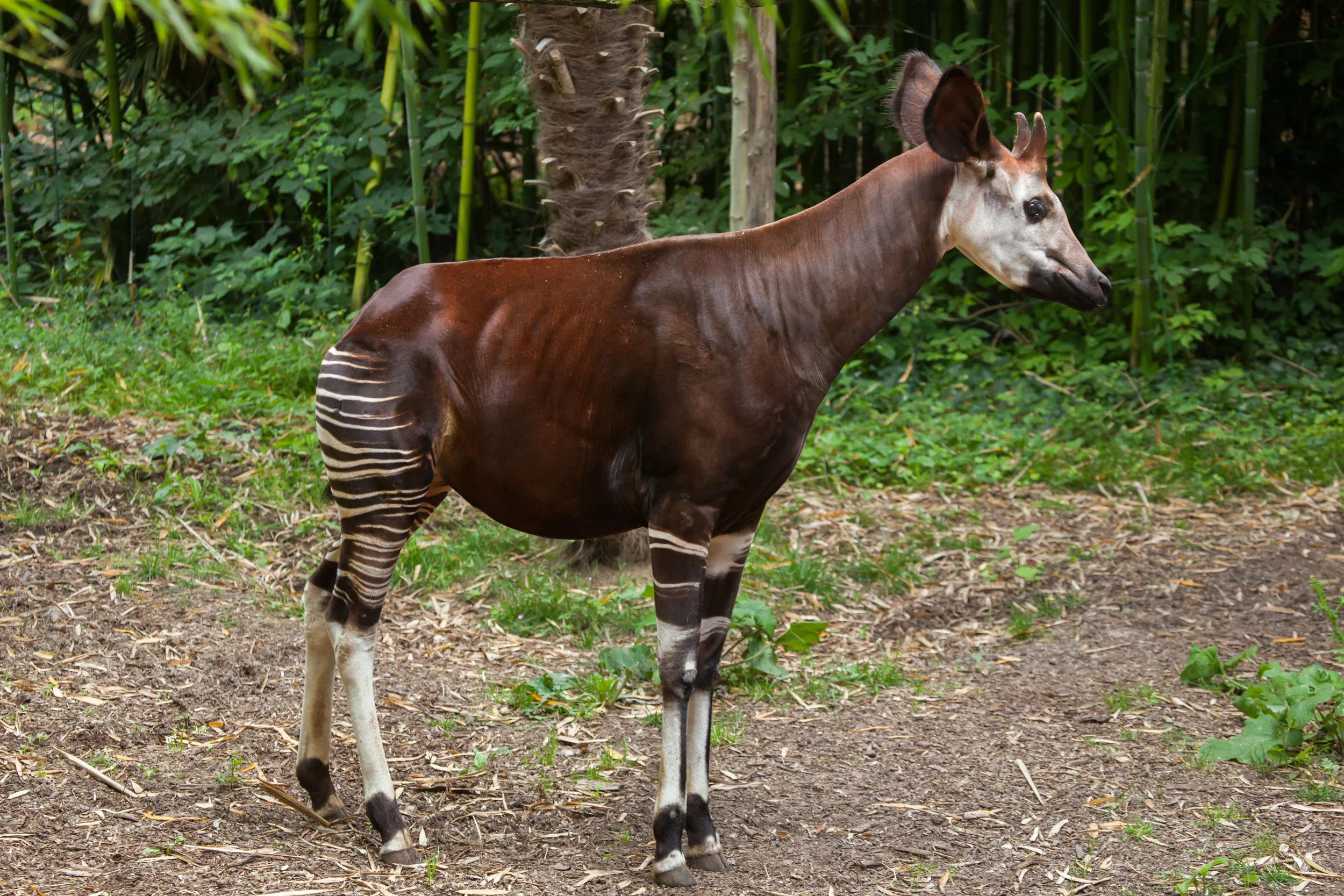Okapi
"Patchwork Perfect" by Steph Laberis (digital)
“I chose these animals for a variety of reasons; the okapi and pangolin because they are my favorite lesser-known beauties… I love painting textures, so each animal provided a different challenge in terms of capturing spots, stripes and scales.”
Your purchase is helping Expedition Art and Saving Species purchase land in Sumatra! Learn more about the project.
Habitat
Okapis are forest animals, found in both dry and rain forests of the Democratic Republic of the Congo. Also known as the “forest giraffe,” the okapi is an animal so shy and secretive in the dense rainforests that very little is known of its lifestyle in the wild.
Family Life
They are largely solitary and once thought to be nocturnal, but are now known to be active during the day. Male and female okapi live in home ranges, but they are not territorial and these ranges overlap. They have scent glands on their feet that spread sticky, tar-like territory markings to alert others of their region. Males also mark their territory with urine. On rare occasions, okapi join together to eat in small groups to groom each other and play together.
Lifespan
Captive individuals have been known to live for up to 33 years.
Hunting Habits/Diet
Okapi are herbivores. They feed largely on twigs, leaves, grasses, fruits and fungi, some of which are known to be poisonous. Clay from riverbeds are also important to their diet as it gives them minerals and salt that they may not be getting from their diet. They will reach up into trees with their tongues, pull down a branch and rake off the leaves with their mouths as they let go of the branch. An okapi can eat between 45 and 60 lbs. of foliage each day.
Population
There are an estimated 15,000 left in the wild.
Fun Fact
These large hoofed mammals were not known to science until 1901.
Why are they Endangered?
The main threat to the okapi is loss of its habitat to agriculture and hunting. In some cases, the hunters are poor people who need protein to survive; but also more and more carcasses are being sold to cities, where bushmeat is bought as a "gourmet" food. The okapi is also endangered by the civil war in the Congo.
Status
Endangered


